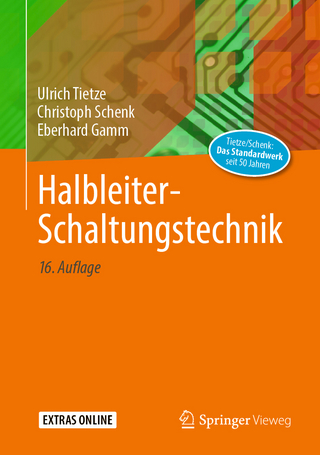
Parallel Scientific Computing
ISTE Ltd and John Wiley & Sons Inc (Verlag)
978-1-84821-581-8 (ISBN)
- Lieferbar (Termin unbekannt)
- Versandkostenfrei innerhalb Deutschlands
- Auch auf Rechnung
- Verfügbarkeit in der Filiale vor Ort prüfen
- Artikel merken
Scientific computing has become an indispensable tool in numerous fields, such as physics, mechanics, biology,
finance and industry. For example, it enables us, thanks to efficient algorithms adapted to current computers, to
simulate, without the help of models or experimentations, the deflection of beams in bending, the sound level in a theater room or a fluid flowing around an aircraft wing.
This book presents the scientific computing techniques applied to parallel computing for the numerical simulation of large-scale problems; these problems result from systems modeled by partial differential equations. Computing concepts will be tackled via examples.
Implementation and programming techniques resulting from the finite element method will be presented for direct solvers, iterative solvers and domain decomposition methods, along with an introduction to MPI and OpenMP.
Fr&Eeacute;déric Magoulès is Professor at LISA / MAS école Centrale Paris, France. François-Xavier Roux is Professor at University Pierre & Marie Curie - Paris 6, France.
Preface xi
Introduction xv
Chapter 1. Computer Architectures 1
1.1. Different types of parallelism 1
1.1.1. Overlap, concurrency and parallelism 1
1.1.2. Temporal and spatial parallelism for arithmetic logic units 4
1.1.3. Parallelism and memory 6
1.2. Memory architecture 7
1.2.1. Interleaved multi-bank memory 7
1.2.2. Memory hierarchy 8
1.2.3. Distributed memory 13
1.3. Hybrid architecture 14
1.3.1. Graphics-type accelerators 14
1.3.2. Hybrid computers 16
Chapter 2. Parallelization and Programming Models 17
2.1. Parallelization 17
2.2. Performance criteria 19
2.2.1. Degree of parallelism 19
2.2.2. Load balancing 21
2.2.3. Granularity 21
2.2.4. Scalability 22
2.3. Data parallelism 25
2.3.1. Loop tasks 25
2.3.2. Dependencies 26
2.3.3. Examples of dependence 27
2.3.4. Reduction operations 30
2.3.5. Nested loops 31
2.3.6. OpenMP 34
2.4. Vectorization: a case study 37
2.4.1. Vector computers and vectorization 37
2.4.2. Dependence 38
2.4.3. Reduction operations 39
2.4.4. Pipeline operations 41
2.5. Message-passing 43
2.5.1. Message-passing programming 43
2.5.2. Parallel environment management 44
2.5.3. Point-to-point communications 45
2.5.4. Collective communications 46
2.6. Performance analysis 49
Chapter 3. Parallel Algorithm Concepts 53
3.1. Parallel algorithms for recurrences 54
3.1.1. The principles of reduction methods 54
3.1.2. Overhead and stability of reduction methods 55
3.1.3. Cyclic reduction 57
3.2. Data locality and distribution: product of matrices 58
3.2.1. Row and column algorithms 58
3.2.2. Block algorithms 60
3.2.3. Distributed algorithms 64
3.2.4. Implementation 66
Chapter 4. Basics of Numerical Matrix Analysis 71
4.1. Review of basic notions of linear algebra 71
4.1.1. Vector spaces, scalar products and orthogonal projection 71
4.1.2. Linear applications and matrices 74
4.2. Properties of matrices 79
4.2.1. Matrices, eigenvalues and eigenvectors 79
4.2.2. Norms of a matrix 80
4.2.3. Basis change 83
4.2.4. Conditioning of a matrix 85
Chapter 5. Sparse Matrices 93
5.1. Origins of sparse matrices 93
5.2. Parallel formation of sparse matrices: shared memory 98
5.3. Parallel formation by block of sparse matrices: distributed memory 99
5.3.1. Parallelization by sets of vertices 99
5.3.2. Parallelization by sets of elements 101
5.3.3. Comparison: sets of vertices and elements 101
Chapter 6. Solving Linear Systems 105
6.1. Direct methods 105
6.2. Iterative methods 106
Chapter 7. LU Methods for Solving Linear Systems 109
7.1. Principle of LU decomposition 109
7.2. Gauss factorization 113
7.3. Gauss–Jordan factorization 115
7.3.1. Row pivoting 118
7.4. Crout and Cholesky factorizations for symmetric matrices 121
Chapter 8. Parallelization of LU Methods for Dense Matrices 125
8.1. Block factorization 125
8.2. Implementation of block factorization in a message-passing environment 130
8.3. Parallelization of forward and backward substitutions 135
Chapter 9. LU Methods for Sparse Matrices 139
9.1. Structure of factorized matrices 139
9.2. Symbolic factorization and renumbering 142
9.3. Elimination trees 147
9.4. Elimination trees and dependencies 152
9.5. Nested dissections 153
9.6. Forward and backward substitutions 159
Chapter 10. Basics of Krylov Subspaces 161
10.1. Krylov subspaces 161
10.2. Construction of the Arnoldi basis 164
Chapter 11. Methods with Complete Orthogonalization for Symmetric Positive Definite Matrices 167
11.1. Construction of the Lanczos basis for symmetric matrices 167
11.2. The Lanczos method 168
11.3. The conjugate gradient method 173
11.4. Comparison with the gradient method 177
11.5. Principle of preconditioning for symmetric positive definite matrices 180
Chapter 12. Exact Orthogonalization Methods for Arbitrary Matrices 185
12.1. The GMRES method 185
12.2. The case of symmetric matrices: the MINRES method 193
12.3. The ORTHODIR method 196
12.4. Principle of preconditioning for non-symmetric matrices 198
Chapter 13. Biorthogonalization Methods for Non-symmetric Matrices 201
13.1. Lanczos biorthogonal basis for non-symmetric matrices 201
13.2. The non-symmetric Lanczos method 206
13.3. The biconjugate gradient method: BiCG 207
13.4. The quasi-minimal residual method: QMR 211
13.5. The BiCGSTAB 217
Chapter 14. Parallelization of Krylov Methods 225
14.1. Parallelization of dense matrix-vector product 225
14.2. Parallelization of sparse matrix-vector product based on node sets 227
14.3. Parallelization of sparse matrix-vector product based on element sets 229
14.3.1. Review of the principles of domain decomposition 229
14.3.2. Matrix-vector product 231
14.3.3. Interface exchanges 233
14.3.4. Asynchronous matrix-vector product with non-blocking communications 236
14.3.5. Comparison: parallelization based on node and element sets 236
14.4. Parallelization of the scalar product 238
14.4.1. By weight 239
14.4.2. By distributivity 239
14.4.3. By ownership 240
14.5. Summary of the parallelization of Krylov methods 241
Chapter 15. Parallel Preconditioning Methods 243
15.1. Diagonal 243
15.2. Incomplete factorization methods 245
15.2.1. Principle 245
15.2.2. Parallelization 248
15.3. Schur complement method 250
15.3.1. Optimal local preconditioning 250
15.3.2. Principle of the Schur complement method 251
15.3.3. Properties of the Schur complement method 254
15.4. Algebraic multigrid 257
15.4.1. Preconditioning using projection 257
15.4.2. Algebraic construction of a coarse grid 258
15.4.3. Algebraic multigrid methods 261
15.5. The Schwarz additive method of preconditioning 263
15.5.1. Principle of the overlap 263
15.5.2. Multiplicative versus additive Schwarz methods 265
15.5.3. Additive Schwarz preconditioning 268
15.5.4. Restricted additive Schwarz: parallel implementation 269
15.6. Preconditioners based on the physics 275
15.6.1. Gauss–Seidel method 275
15.6.2. Linelet method 276
Appendices 279
Appendix 1 281
Appendix 2 301
Appendix 3 323
Bibliography 339
Index 343
| Verlagsort | London |
|---|---|
| Sprache | englisch |
| Maße | 165 x 241 mm |
| Gewicht | 694 g |
| Themenwelt | Mathematik / Informatik ► Informatik ► Theorie / Studium |
| Informatik ► Weitere Themen ► Hardware | |
| Technik ► Elektrotechnik / Energietechnik | |
| ISBN-10 | 1-84821-581-9 / 1848215819 |
| ISBN-13 | 978-1-84821-581-8 / 9781848215818 |
| Zustand | Neuware |
| Informationen gemäß Produktsicherheitsverordnung (GPSR) | |
| Haben Sie eine Frage zum Produkt? |
aus dem Bereich


